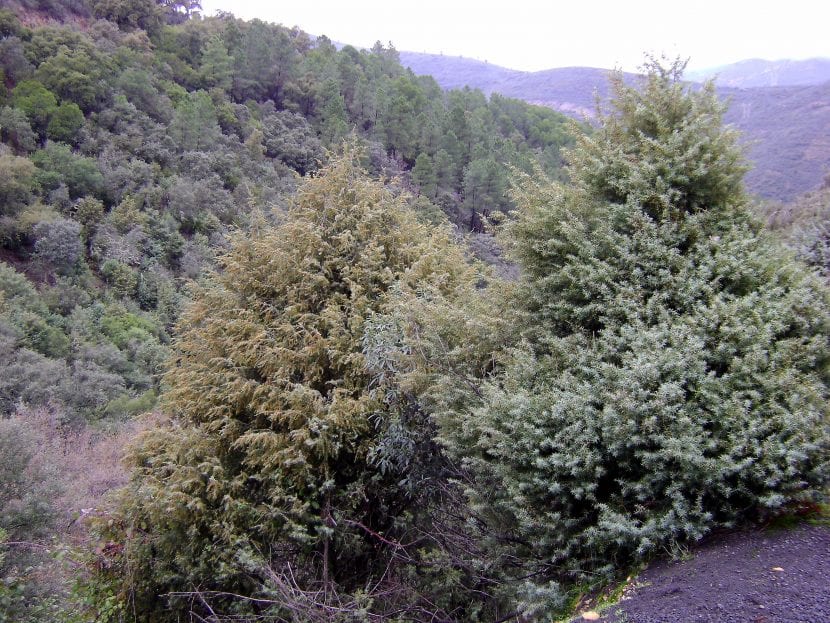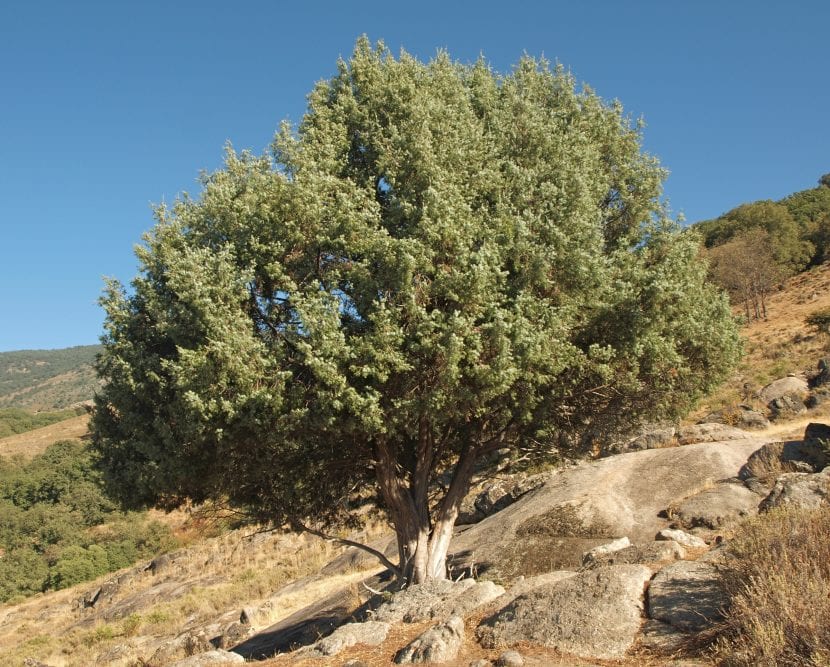
In the mountainous terrain and stony fields of much of Europe and North Africa we find one of the most adaptable conifers in the world: its scientific name is Juniperus oxycedrus.
Known as red juniper, miera juniper, oxicedro or Spanish cedar, it is an evergreen plant ideal for sunny gardens with low rainfall. So if you were looking for a resistant plant, this beauty is 😉.
Origin and characteristics of Juniperus oxycedrus
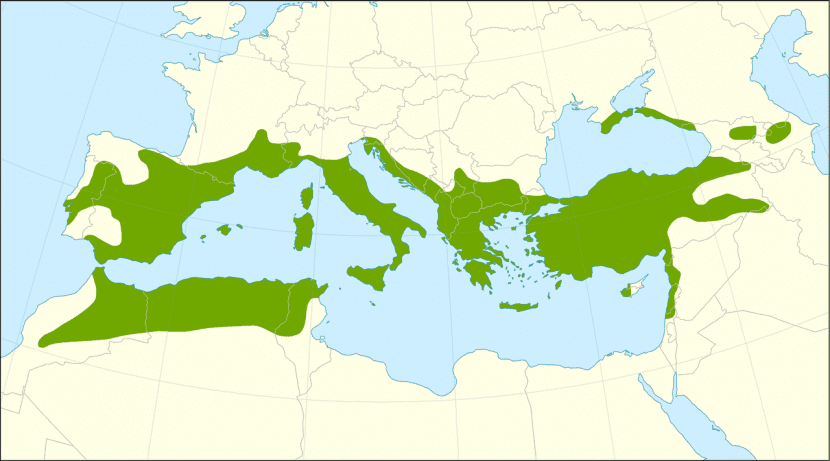
Map of the distribution of Juniperus oxycedrus.
Our protagonist is a tree that we can find in all the places painted green on the map: much of the Iberian Peninsula, the Balearic Islands, eastern France, Greece, Italy, southern Asia, northern Arabia and northern Africa. It mainly inhabits holm oak groves and Mediterranean forests, from sea level to 1000 meters.
It is characterized by growing up to 20 meters in height and for having a conical or oval shaped cup, usually ending in a point. Its trunk is thick and erect, with fibrous, grayish-brown bark. The leaves are linear, acicular, rigid, sharp, with two white lines on the upper side.
Produces flowers from late winter to late spring. There are female and other male specimens. The fruits are globose or ovoid in shape, fleshy, greenish at the beginning and red or reddish-brown when they finish ripening.
Subspecies
There are several subspecies, the main ones being the following:
Juniperus oxycedrus subsp. badia
It is the largest species of all, as it can reach a height of 15 meters. It is native to the Iberian Peninsula and North Africa.
Juniperus oxycedrus subsp. macrocarp
It is the maritime juniper. It can reach 5 meters in height, but normally it does not exceed 3m.
Juniperus oxycedrus subsp. oxycedrus
It has a shrubby habit and leaves narrower than the rest of the subspecies.
Juniperus oxycedrus subsp. transtagana
Its growth is shrubby, it has reduced leaves and it lives on the southern coasts of Portugal and Spain.
How do you take care of yourself?
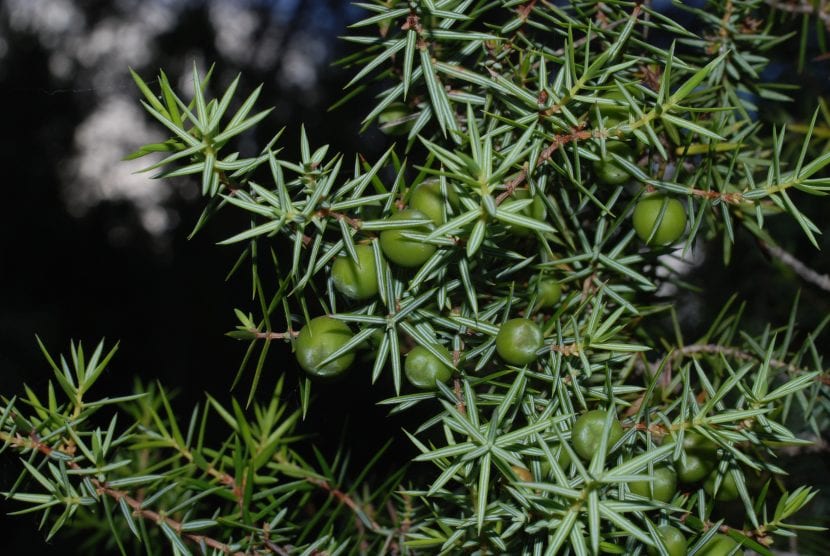
Would you like to have a specimen in your garden? Write down these tips and tricks:
Location
Red juniper it has to be outside, in full sun. It can also be placed in semi-shadow as long as the light of the star directly shines it for a minimum of 4 hours a day. Tolerates salinity.
Land
Not demanding. It can grow both in limestone and sandy ones.
Irrigation
Although it is a plant that resists drought well, It is necessary to water it every 3-4 days in summer and every week the rest of the year, especially if it has been planted in the ground for less than two.
Subscriber
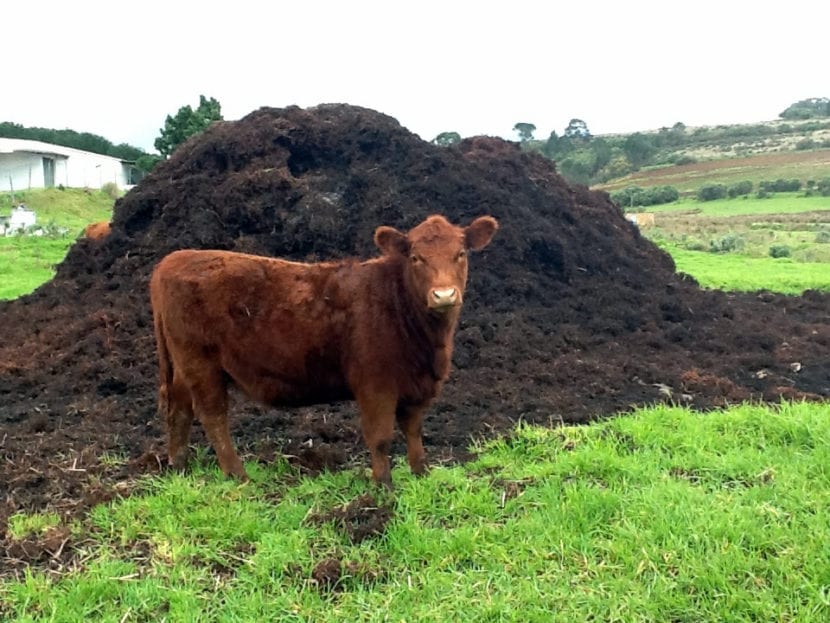
Highly recommended to pay with Organic fertilizers from spring to late fall. Plus manure, guano o compostWe can also add egg and banana peels, vegetables that are no longer edible, and the like.
Planting time
The best time to plant it in the garden is in spring, when the risk of frost has passed.
Multiplication
El Juniperus oxycedrus multiplies by seeds in spring. It requires a lot of patience. Proceed as follows:
- The first thing to do is prepare the seedbed. As such we can use anything: flowerpots, forest trays, milk containers, yogurt glasses, ... In the case of using containers of edible products, we have to clean them well with water and make some holes in the base for drainage.
- Afterwards, we fill it with universal culture substrate mixed with 30% perlite.
- Next, we sow the seeds, putting no more than 3 together, and sprinkle copper or sulfur to prevent the appearance of fungi.
- Then we cover them with substrate.
- Finally, we water and place the seedbed outside, in semi-shade.
How long do they take to germinate? Quite. From 6 months to 2 years.
Rusticity
It is very resistant to cold and frost. It can easily withstand up to -18ºC.
For what do you use it?
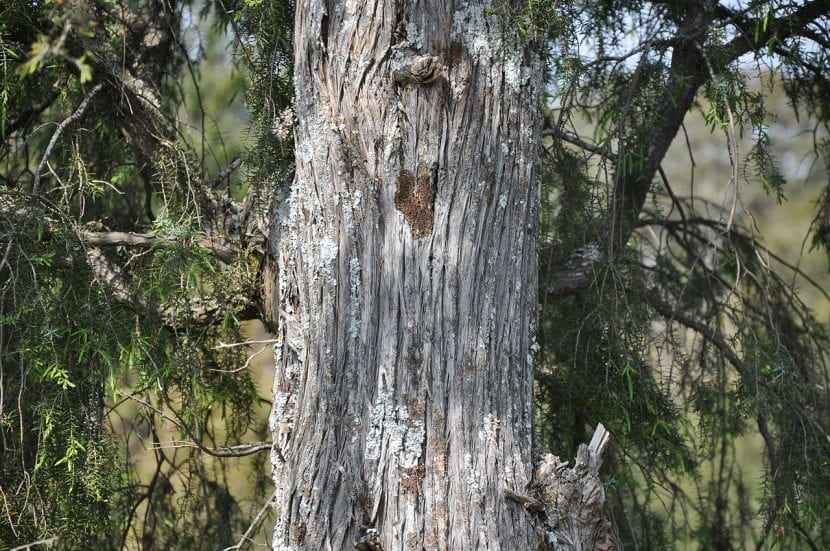
Ornamental
It is a plant that looks great in any garden, either as an isolated specimen or in groups. In addition, it tolerates salinity, sandy and limestone soils, and as if that were not enough, it resists drought. What more could you want? It is true that its seeds take their time to germinate, but that does not mean that it is not a very interesting species, don't you think? 🙂
Culinary
In the Balearic Islands the berries are used as a substitute for common juniper (Juniperus communis) to flavor the gin.
Medicinal
- For humans: The essential oil that is extracted from the wood is used in skin treatments, such as eczema, psoriasis or scabies.
- In veterinary: the tar is used to treat diseases of the skin of cattle, and as an anthelmintic.
In cabinetmaking
The wood of this conifer is very resistant and hard, so that used to make pillars and beams.
Other uses
Its essential oil too used as a parasite repellent and as incense.
What did you think of the Juniperus oxycedrus?
